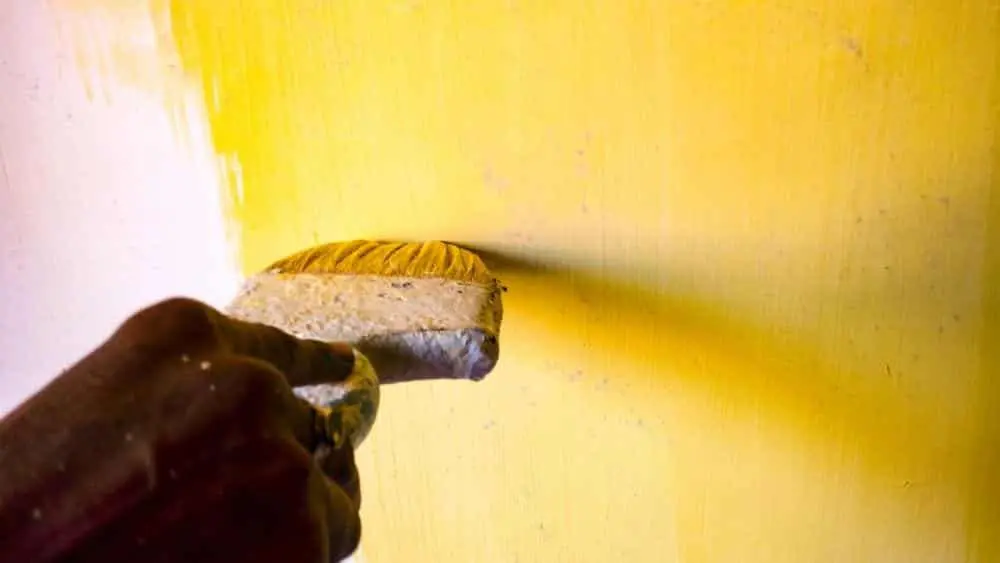
No decorating decision shapes your experience of living in your house like your choices of interior paint colors and applications.
Between hiring a painter or doing it yourself, choosing colors and types of paint and then determining which surfaces (floors, walls, ceilings) will get painted, you may feel that you have your work cut out for you.
Relax, we have you covered. Below are some tips to help you make educated decisions and end up with a beautifully painted home that reflects your style, coordinates with your furniture and lasts for many years.
Hire a Painter or DIY?
If you have high ceilings, a large house or a time crunch on your hands, consider hiring a painter. Angie’s List is one of the best sources of painting contractors because recommendations on the site are genuine and never paid for. Through Angie’s List, you’ll be able to find a bonded and insured painter who has impressed many homeowners in your area with their great work.
Another possibility is FreshCoat, a chain of franchises throughout the United States. Before signing on with a painting contractor, it’s essential that you get a firm quote. “Typically, painting contractors provide broad estimates, not quotes,” explains Greg Platz, director of operation for FreshCoat. “They often don’t explain to their customer what makes up the final price. Is paint included? Is prep included? How long will the job take? Estimates, more often than not are just that, estimates. The customer is not able to appropriately budget and know exactly what the end product will be.”
Platz goes on to say that firm, fixed quotes protect everyone involved by setting up clear expectations. Quotes should contain line-item details and pricing for each task to be completed. Each line item should be very specific and to the number of coats that will be applied to each surface, the prep involved and all other aspects of the job.
If your home is smaller, you’re trying to save money or want to try creative applications like stencils or checkerboard floors, consider doing the work yourself. Budget an appropriate amount of time so you can complete the job before you move into your new house.
Consider Low or Zero VOC Paints
Eco-friendly paint isn’t just a green trend. Using paint with zero or low-VOC (volatile organic compounds) can make a big difference in the air quality of a home. VOCs are found in many paints, stains and cleaning products and are produced by solvents used in the manufacturing process of these products. As paint cures and dries, airborne solvents are released and can create an unhealthy environment. Platz advises that you choose eco-friendly paints — of which there are now many options — to reduce your exposure to VOCs.
“Anyone who has ever experienced the fumes of a freshly painted house has experienced the negative impact VOCs have,” he says. “Eco-friendly paints greatly reduce this issue.” And don’t forget the benefits to the planet: “Environmentally speaking, eco-friendly paints contain far less solvents and harmful chemicals, and no oil.”
In terms of good, better and best, look for premium-grade zero VOC paints that also use VOC-free colorants, are free of vinyl and other plasticizers and include no toxic biocides. You can recognize these paints by the environmental certification seal on their label.
When Choosing Colors, Don’t Fall for Common Misconceptions
Now for the most fun part: choosing colors. We all carry with us some misconceptions about paint colors that should be overturned before we narrow down.
Donna Schroeder, manager of color and design for Sherwin-Williams, addresses a common misconception, namely that small rooms shouldn’t be painted dark colors. “It’s true that darker colors can make a space seem smaller, but that’s not always a bad thing,” she says. “If you’re trying to create the sense of intimacy or coziness in a room, darker shades can help you achieve this.”
Another misconception: colored ceilings seem too low. “People often paint their ceilings white because they are afraid of them feeling too low if they use a color, says Schroeder. “To the contrary, using a color can also create the sense of depth, giving the illusion that the ceiling is higher.”
When picking colors, “too often, people are controlled by color trends,” says interior designer and color expert Kathryn Marsh. “Your feelings and moods define the colors that are best for you. The colors in your home need to reflect your preferences and fit in with your lifestyle.”
Where to Look for Inspiration
Since color trends change quite often, consider whether you want to repaint frequently or choose paint colors that represent your style identity over the long term.
When looking for colors, you can find inspiration anywhere. “You can use a piece of fabric, a painting or your favorite foods and choose colors from there,” Marsh says. “Even a favorite vacation spot and the colors from that area can inspire you. Or you could use the colors from your garden.” Even a stunning photo or book cover can get you thinking about how colors would work in a room.
Also take into account the mood you want in each room. A room with many windows looking to the outdoors will shine when coated in nature’s colors, like pale green or blue. If you want your bedroom to feel intimate and private, a deep, soothing color like grey, brown or blue could work. Children’s rooms are an opportunity for playful colors and bathrooms tend to be where we experiment with strong, unexpected colors.
Is your furniture neutral or is there a defined range of colors that will work with the furniture to be placed in a room? “Consider fixed elements and furniture,” advises Marsh. “Compare your paint samples with your furniture, flooring, cabinets, counters, fireplaces, lighting and plumbing fixtures. By keeping these in mind, you will avoid the colors in your room clashing. You want your colors to harmonize.”
Once you’ve decided which colors will go in each room, determine which finish you want. Rooms where children will be and other spaces that are likely to get splattered on, such as the kitchen, do best with eggshell, which is easier to clean than matte.
Schroeder also says that “the higher the sheen, the more reflection you will have.” So, you might not want a glossy paint in your media room, where light from your screen will bounce around on the walls and become a distraction. On the other hand, a den with a fireplace that is mainly used in the evening will benefit from some shine in the paint and will play up the flames in the fireplace.
Personalize Your Walls With Stencils and Special Applications
Stencils are not what they used to be. For those who grew up with country-style chickens, hearts and pineapples on your mother’s walls, there’s a fresh, new wave of modern designs to discover.
“Stenciling walls, ceilings, floor and furniture is a great way to add pattern and personality to any space,” says Melanie Royals of Royal Design Studio in Chula Vista, Calif. “Whether it’s a bedroom, living room or kitchen, the great benefit to using stencils is that the homeowner can personalize the pattern with the colors of their choice that work well with their own environment.”
One of the hottest trends in stencil designs is new takes on classic geometric patterns such as chevron, herringbones, triangles and even polka dots. “These simpler motifs work well in both modern and transitional interiors and allow home decorators to create an engaging design on their walls that compliments, rather than competes with, other patterns in the room,” Royals says.
Annie Sloan, decorative paint expert and author of Colour Recipes for Painted Furniture and More, encourages folks to use paint creatively to take rooms from boring to eye-catching. Speaking of new homes in particular, Sloan says, “if you have an opportunity to paint a floor with a pattern, you’re off and running when it comes to putting your own stamp on the house, and creating a unique look.”

Sarah Kinbar is a writer and editor with a passion for design and images. She was the editor of Garden Design magazine, curating coverage of residential gardens around the globe. As the editor of American Photo, Kinbar worked with photographers of every genre to create a magazine that told the story of the photographer’s journey.
She has been writing about architecture, landscape design and new-home construction for NewHomeSource since 2012. During that time, she founded Kinship Design Marketing, a boutique agency that provides content for website redesigns, blogs, inbound marketing campaigns and eNewsletters.
 Secrets of a Model Home Designer
Secrets of a Model Home Designer